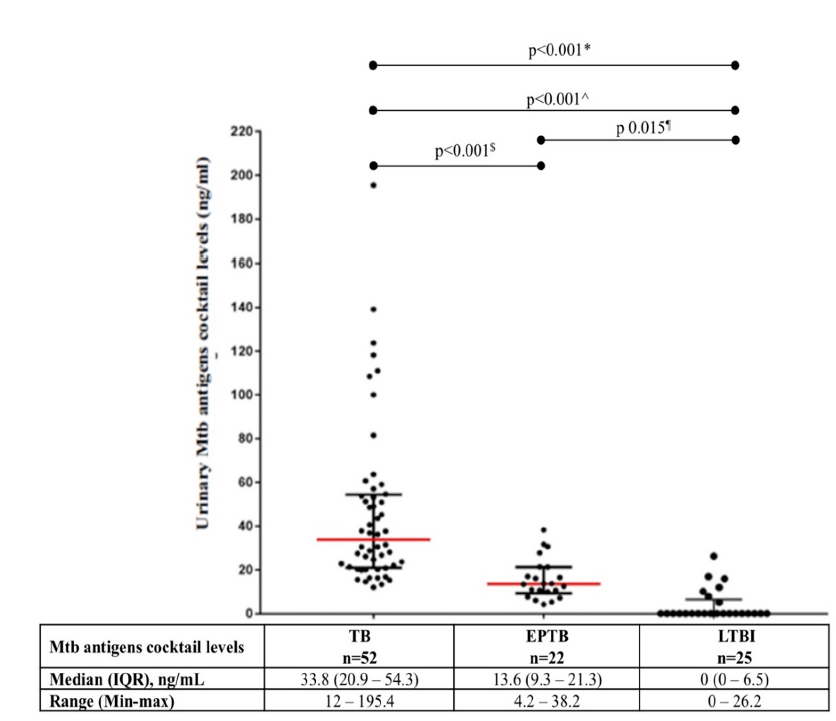Urinary Mycobacterium tuberculosis Antigens Cocktail as a Potential Marker for Differentiating Active and Latent Tuberculosis Patients
DOI:
https://doi.org/10.15419/bmrat.v9i6.746Keywords:
extra-pulmonary TB, latent TB, M. tuberculosis, pulmonary TB, urinary Mtb antigens cocktail (ESAT6, CFP10, and MPT64)Abstract
Background: Early secretory antigenic target protein 6-kDa (ESAT-6), culture filtrate 10-kDa (CFP- 10), and Mycobacterium tuberculosis (Mtb) 64 (MPT-64) antigens are secreted by actively growing Mtb in active tuberculosis (TB) patients. Increased levels of ESAT-6, CFP-10, and MPT-64 at the site of infection facilitate the entry of antigens into the systemic circulation. These low molecular weight proteins (< 67 kDa) can be excreted into the urine via the kidneys. Therefore, this study evaluated the urinary Mtb antigen cocktail (ESAT-6, CFP-10, and MPT-64) levels in active [pulmonary (P) and extrapulmonary (EP)] TB and latent tuberculosis infections (LTBI) individuals.
Methods: This study was conducted in Dr. Hasan Sadikin General Hospital Bandung from June 2016 to June 2017, using 474 participants. The specimens for TB diagnosis were taken and investigated for acid-fast bacilli (AFB) using the Ziehl Neelsen (ZN) technique. The remaining sputum was cultured on Lowenstein- Jensen (LJ) medium, and TB Ag MPT-64 rapid tests were performed to identify Mtb. In addition, LTBI individuals were screened in a TB outpatient clinic who had close contact with patients with active TB and underwent an interferon g release assay (IGRA). Urine samples were collected for urinary Mtb antigen cocktail (ESAT-6, CFP-10, and MPT-64) testing using the quantitative immunochromatographic method.
Results: The 99 patients were divided into three groups, PTB (n = 52), EPTB (n = 22) and LTBI (n = 25). There were significant differences in urinary Mtb antigen cocktail levels between PTB and EPTB (33.8 vs 13.6 ng/ml; p < 0.001), between PTB and LTBI (33.8 vs 0 ng/ml; p < 0.001), and between EPTB and LTBI (13.6 vs 0 ng/ml; p = 0.015).
Conclusion: Urinary Mtb antigen cocktail levels were increased in patients with active TB and undetected in those with LTBI. This result was obtained using the urinary Mtb antigen cocktail as a potential marker for differentiating active TB and LTBI.

Published
Issue
Section
License
Copyright The Author(s) 2017. This article is published with open access by BioMedPress. This article is distributed under the terms of the Creative Commons Attribution License (CC-BY 4.0) which permits any use, distribution, and reproduction in any medium, provided the original author(s) and the source are credited.
